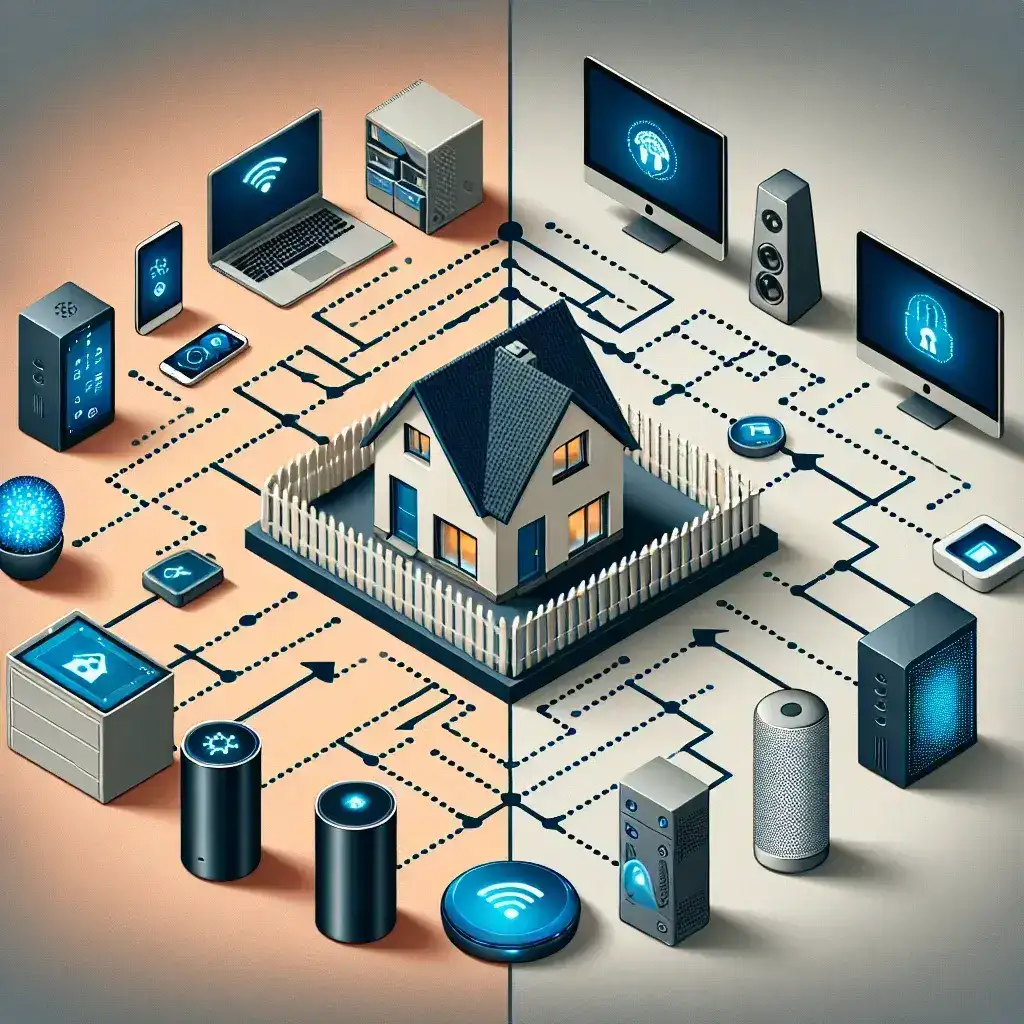Introduction
In today’s rapidly advancing technological landscape, smart homes are becoming increasingly common. Devices such as smart thermostats, security cameras, and voice assistants enrich our lives, providing convenience and efficiency. However, this interconnectedness raises significant security concerns, as vulnerabilities in one device can expose your entire network. This article discusses smart home device network isolation, a crucial strategy for protecting your primary devices.
Understanding Smart Home Networks
Smart home networks consist of various devices that communicate over the internet. These include:
- Smart lighting systems
- Smart locks
- Smart appliances
- Home automation hubs
- Security cameras
While these devices offer numerous benefits, they can also serve as entry points for cybercriminals. Once a hacker gains access to a less secure device, they can potentially infiltrate your primary devices, including computers, tablets, and smartphones. Therefore, understanding how to isolate these devices is crucial.
What is Network Isolation?
Network isolation refers to the practice of segmenting your home network into different segments or sub-networks. This means that devices on one segment cannot communicate with devices on another segment, effectively containing any potential breaches. By isolating smart devices from primary devices, users can minimize the risk of exposure to cyber threats.
Benefits of Network Isolation
- Enhanced Security: Isolating devices prevents unauthorized access from compromised smart devices to more critical devices.
- Limit Damage: In case of a breach, the damage can be contained to the isolated network, preventing widespread compromise.
- Improved Performance: Segmentation can lead to better network performance by reducing congestion.
- Ease of Management: Isolated networks can be monitored and managed separately, making it easier to apply security updates and changes.
How to Implement Network Isolation
Implementing network isolation can seem daunting to many users. However, following these straightforward steps can help you secure your smart home devices effectively.
Step 1: Assess Your Network
Begin by evaluating your current network setup. Identify which devices you have and categorize them into primary devices (e.g., computers, smartphones) and smart devices (e.g., cameras, smart bulbs).
Step 2: Use a Dual-Band Router
A dual-band router operates on two frequencies: 2.4 GHz and 5 GHz. You can place your smart devices on one band while keeping your primary devices on another. This physical separation adds a layer of security.
Step 3: Create a Guest Network
Many modern routers allow you to create a guest network. Use this feature to connect your smart devices to the guest network. This network should have limited access to your main network, effectively isolating smart devices from your primary devices.
Step 4: Utilize VLANs (Virtual Local Area Networks)
If your router supports VLANs, take advantage of this feature to create separate networks for your devices. You can assign different VLANs for smart devices and primary devices, ensuring isolation at a more advanced level.
Step 5: Implement Firewall Rules
Configure firewall rules to restrict communication between the different segments of your network. By defining which devices can talk to each other, you strengthen your network’s defense.
Future of Smart Home Device Security
As the adoption of smart home devices continues to rise, so will the sophistication of cyber threats. Experts predict that the need for robust network isolation strategies will only grow in importance. Future smart home technologies may incorporate built-in isolation features, making it easier for users to protect their devices.
Predictions on Smart Home Security Trends
- Increased Use of AI: Artificial intelligence will play a significant role in identifying and responding to security threats in real-time.
- Stronger Authentication Measures: The use of multi-factor authentication (MFA) will become standard for smart home devices.
- Growing Awareness: As consumers become more aware of security risks, manufacturers will prioritize security in their device design.
Real-Life Examples of Network Isolation
Consider the case of a homeowner named Sarah, who recently integrated smart devices into her home. After reading about network isolation, she decided to implement it. She set up a guest network for her smart devices and configured her router to restrict access. A few months later, Sarah received alerts from her security camera about unusual activity. Thanks to her network isolation strategy, the threat was contained, and her primary devices remained secure.
Conclusion
Smart home device network isolation is an essential practice for anyone looking to enhance their home security. By segmenting your network, you can protect your primary devices from cyber threats that may arise due to less secure smart devices. Implementing network isolation may require some effort, but the benefits of enhanced security and peace of mind are well worth it.
Call to Action
Take the first step towards securing your smart home today. Assess your network, implement isolation strategies, and stay safe in this increasingly connected world.

Leave a Reply